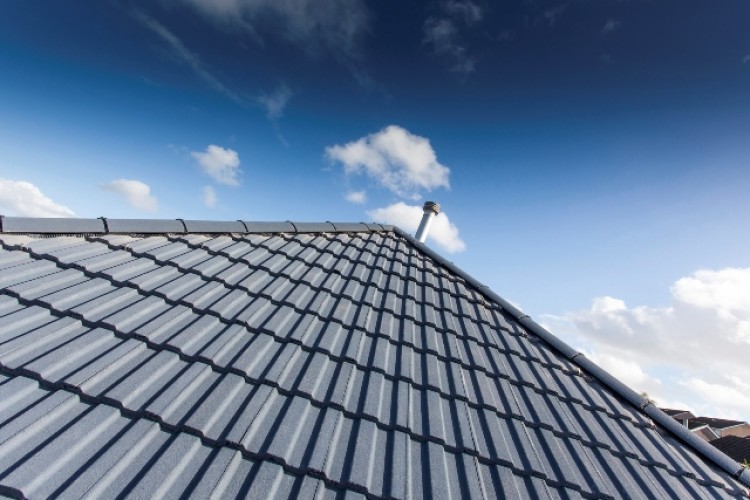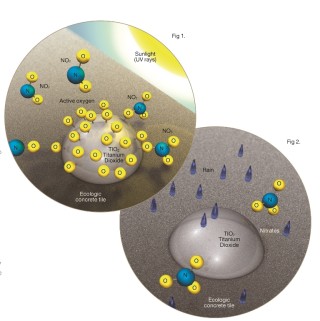Marley Eternit wants the government to use photocatalytic technology on roads and buildings as part of its strategy to tackle air pollution.
The roofing and facades manufacturer suggests that the UK could follow the lead of such countries as Japan and the Netherlands by using the pollution absorbing technology to effectively ‘eat’ excess levels of nitrogen dioxide and nitric oxide (NOx) in the air.
Marley Eternit launched its ‘pollution eating’ roof tile EcoLogic in 2007 and it has been used by some local authorities on their housing stock to improve air quality in the local area.
The coating on Ecologic tiles contains titanium dioxide, which speeds up the naturally occurring nitrogen cycle, the manufacturer says. The coating reacts with nitrogen oxides in the air to convert them to nitric acid, which is then neutralised to form calcium nitrate, a harmless liquid fertiliser. Tests indicate that the coating will continue to absorb pollutants for around 25 years.
Marley Eternit product manager Gavin White said: “Using photocatalytic technology on just one roof has an impact on surrounding air pollution levels, but imagine the impact that thousands or millions of roofs could have. Why is there no grant or incentive for homeowners or developers to use technology on their roofs that can actually cut air pollution? In reality, vast amounts of NOx are being emitted into the atmosphere and although Ecologic tiles alone cannot eliminate this, they will make a positive difference to help reduce NOx levels. If the government truly wants to make an impact on air pollution, it needs to make sure that its air pollution plan doesn’t solely focus on the polluter but instead does more to encourage the use of photocatalytic technology to reduce the pollution that is already in the air.”
The UK has breached EU air pollution produce up a compliance strategy. Marley Eternit says that reducing engine emissions through technology and curbs is not the only answer.

“The UK is in breach of its air pollution targets in 16 areas, mainly busy cities. The government has been warned that it must reduce the amount of nitrogen dioxide (NO2) the UK produces and submit a plan outlining how it will do this by the end of 2015,” Mr White said. “The first area to address is clearly the polluter itself – mainly vehicles, particularly diesels. It is likely therefore that the government plan will already include measures such as low emission zones, incentivising the use of cleaner technology in vehicles and reducing the amount of car journeys we make.
“However, if it only addresses the polluter, rather than the pollution itself, then the UK is missing a trick. A better option is to take a two pronged approach and also look to reduce the amount of pollution that is still being produced with the use of photocatalytic technology on our buildings and roads to absorb the toxic mix of NOx generated by road traffic exhaust fumes.”
He added: “Using typical data on pollution levels in urban areas, coupled with our laboratory test data, we estimate that over the lifespan of an average sized roof, the amount of NOx the tiles will remove could be equivalent to that emitted by a modern car covering over 100,000 miles. Indeed, we estimate that the tiles have already saved millions of miles in pollution since they were launched.”
Photocatalytic technology is already used in cement on pavements in Japan, America and the Netherlands to cut pollution at the roadside. Marley Eternit cited a study of busy roads in the Netherlands that found photocatalytic concrete decreased NOx levels by 25%, and by as much as 45% in ideal weather conditions.
The science
Got a story? Email news@theconstructionindex.co.uk




